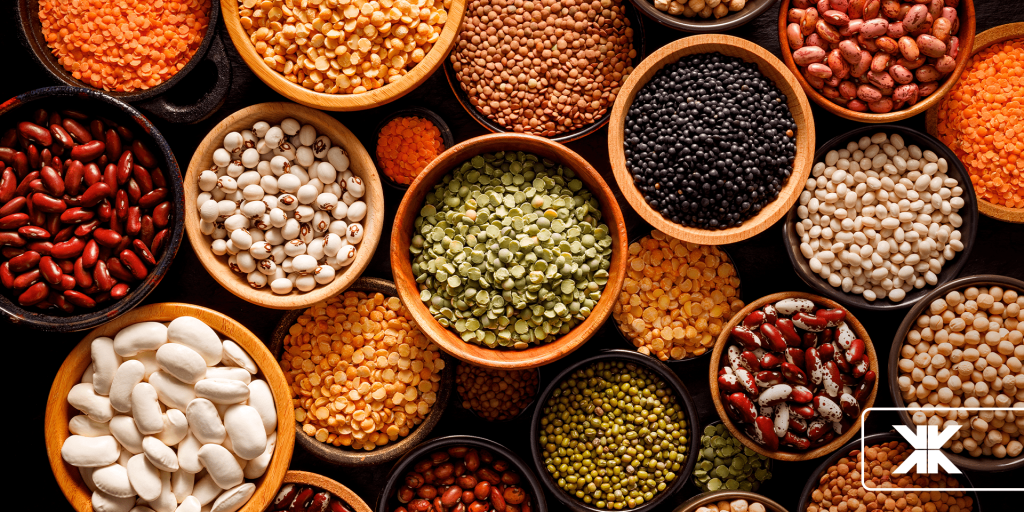
Categoria: Packaging
EVERYTHING YOU NEED TO KNOW ABOUT PULSE PACKAGING
As we seek more sustainable and healthier solutions to feed the world’s growing population, pulses are emerging as superfoods with enormous potential.
They are rich in protein and fiber and have a significantly lower environmental impact when compared to proteins of animal origin.
Continue reading to learn more about pulse packaging, the current scenario of this segment in Brazil, the importance of food safety and how we can contribute to sustainability by automating the packaging of these products.
What are pulses?
Pulses, also known as legumes, are plants belonging to the Fabaceae family. The term gained prominence in Brazil thanks to IBRAFE – Instituto Brasileiro do Feijão e Pulses.
These crops stand out for their dry grains, which are rich in protein, fiber and several essential nutrients. Brazil has an abundant harvest of this food group, which has been cultivated globally for years. Among the most common pulses are beans, lentils, peas and chickpeas. Its contribution to balanced diets is especially important for vegetarians and vegans, thanks to its high protein quality.
Read also: Main automatic machines for bagging seeds.
Pulses in Brazil
Brazil is one of the main pulse producers in the world, with a long tradition in the cultivation of beans and other legumes.
With its vast territorial extension and diverse climates, the country offers ideal conditions for growing these foods.
Furthermore, the pulse-based food market has gained significant momentum in Brazil in recent years, with an increase in demand for pulse-based products and growing awareness about their health benefits.
Pulse Packaging and Food Safety
Food safety is a priority when it comes to pulses. Proper packaging and storage are crucial to ensuring these foods maintain their quality and safety.
This includes protecting the pulses against humidity, light and other factors that can affect their durability and flavor. Vertical packaging automation plays a fundamental role in maintaining the integrity of these products, ensuring that they reach end consumers with the desired quality.
How automation can contribute to Sustainability
Below, check out 4 ways automation can make a difference and contribute to sustainability in pulse packaging.
1. Waste reduction Packaging automation allows precise control of the quantity of pulses packed in each package, reducing waste. This is especially important considering the value of these foods and the environmental impact of production.
2. Shelf life Technical packaging features that can maintain the quality and extend the shelf life of food, ensuring that the pulses remain fresh for longer and preventing nutrient degradation.
Read also: How to optimize food transportation
3. Reduced energy use
Modern, up-to-date packaging machines are designed to be efficient and tend to be more economical, in terms of energy and maintenance, reducing consumption of natural resources and reducing operating costs.
4. Sustainable packaging
Automation makes it possible to incorporate sustainable packaging. An example of this is the use of PCR plastic, a resin that comes from products already manufactured for other purposes, and which opens up possibilities for raising awareness about recycling and reuse when baling packages.
In packaging, packaging produced with monomaterial films stands out in the pulse line, facilitating economic recycling and eliminating metallized layers or other polymers, such as Nylon and PET (Polyethylene Terephthalate), for example.
Read also: Indumak bets on the circular economy to reduce virgin raw materials
Pulses are leading the food sector in terms of sustainability and healthy eating, and packaging automation plays an essential role in this process.
It ensures food safety and product quality, and contributes to reducing waste and promoting sustainable packaging.
Count on Indumak to build a more sustainable future. Contact our experts and purchase tailor-made solutions for your business







